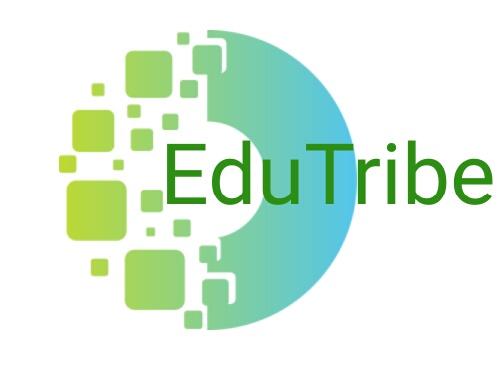Positive side of Indian Education system :-
- Students go through many exams in their learning years. It teaches to analyse our strengths and weaknesses consistently.
- Indian education system emphasizes competitive spirit. Competition teaches students to unleash their full potential.
- Indian schools teach basic knowledge in all subjects.
- Annual system in school years helps slow learners.
- These days a lot of positive changes are happening in the education system of India. Emphasis on practical knowledge is increased.
Drawbacks of Indian Education system :-
- Rote learning. Emphasis on memorizing the facts rather than thoroughly understanding the concepts.
- Completely relying on text books.
- Giving more importance to text books than the teacher. There is no autonomy to teachers.
- Students have no freedom to think creatively and to question the content in the text books.
- Taking marks as assessment of student’s talent, when marks can be easily obtained by memorizing the pre-written answers from the text books.
- Students are not being taught why they are learning the particular subjects and topic. Text books do not mention how the topics are relevant in the practical life.
- There is no incentive for teachers to encourage critical thinking in children.
- Lack of infrastructure.
- Most of the syllabus is in theoretical form.
- Dearth of capable teachers in government schools.
- Low salaries of teachers.
- Pressurizing students for marks and grades. Student suicides are increasing day by day.
- Students are learning the subjects just to reach to the next level, i.e obtaining admission from the good college.
- Indian govt is spending only 3% of its GDP on education.
- As the Govt unable invest enough in the education sectors, private institutions roped in, and the result is High cost of education.
- No control of govt on fee structure of private educational institutes.
- Ethics aren’t being taught in schools. And the result of this is many educated persons lack ethics.
- Very low teacher to student ratio. As a result, teachers are not able to concentrate on each and every child. According to Right to Education, there should be one teacher for every 30 students.
- High prices of higher education in India. Indian Govt isn’t investing in the higher education aspirants.
- Rise of coaching centers for competitive exams and private tuitions for school children are is resulted by the poor education system, which couldn’t make students job-ready.
- Our text books do not mention the importance of physical activity and the extra curricular activities. Most of the schools in India do not have play grounds.
- Not encouraging research and innovation.
- Not teaching students about how to deal with daily life struggles.
- Incentivising hyper-competitiveness rather than encouraging to co-learn.
- Shortage of text books for govt school students.
- No proper career guidance available for students.
- Most of the govt school students are unable to do basic math. This reveals the negligence of teachers.
- Not everyone has access to school. A lot rural areas still have no schools. And there are many single teacher schools.
- In the top 100 universities list by ‘Times Higher Education World Reputation Rankings 2016’, none of the Indian universities could make into the list.
What Indian Government is doing :-
- The ‘National Policy on Education’ was framed in 1986 and was amended in 1992.
- New Education Policy (NEP) is going to be formed in 2016 to bring revolutionary changes in Indian education system.
- Rashtriya Madyamika Abhiyan, 2009 – This scheme aims to enhance access to secondary education and to improve its quality.
- Vidyanjali scheme, 2016 – to encourage extra curricular activities in students.
- Rashtriya Uchchatar Shiksha Abhiyan (RUSA), 2013 – A mission to finance massively in state universities. But this wasn’t successful as expected.
What still needs to be done :-
- Indian Govt needs to invest heavily in infrastructure, teachers and in training teachers. At least 4% of its GDP must be invested in the education sector.
- Our attitude towards marks and grades needs to be changed.
- Method of teaching needs a relook. Teachers should encourage logical thinking & creativity in students. “Tell me and I forget, teach me and I remember, involve me and I learn.”― Benjamin Franklin
- Exams should be in a way that student’s understanding of the subject can be assessed.
- Students should be exposed to economic and societal problems in the world.
- Self help books and biographies of successful persons should be a part of the syllabus. So that children can mould their personalities and can handle stress well, once they start career.
- Malnutrition effects child’s ability to learn. So, nutritional deficit must be taken care of.
Situation in other countries :-
- USA is spending 5.4% of its GDP in the education sector, whereas Brazil is spending 5.7% of its GDP.
- China invests heavily in its students and universities. In the Times Higher Education World Reputation Rankings 2016, China could grab nine positions in the top 100 universities list.
- In South Korea, which has high literacy rates, there is a high respect for teaching profession.
Conclusion :-
There is a dire need for revolutionary changes in the India’s education system. Not just the syllabus and pedagogy, but also the attitude change towards the marks system need to be changed. With the effective learning system, India can successfully utilize its vast human resources.
Anita Kadam
I am a webbloger who says i will write a book one day..!
Get Free Email Updates to your Inbox!



